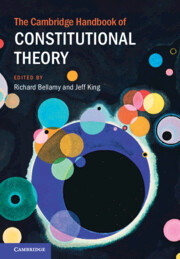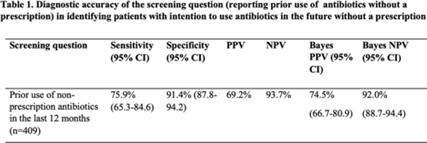167 results

The Cambridge Handbook of Constitutional Theory
- Coming soon
-
- Expected online publication date:
- August 2024
- Print publication:
- 31 August 2024
-
- Book
- Export citation
From bias to black boxes: understanding and managing the risks of AI – an actuarial perspective
-
- Journal:
- British Actuarial Journal / Volume 29 / 2024
- Published online by Cambridge University Press:
- 11 April 2024, e6
-
- Article
-
- You have access
- Open access
- HTML
- Export citation
Head and Neck Cancer: United Kingdom National Multidisciplinary Guidelines, Sixth Edition
-
- Journal:
- The Journal of Laryngology & Otology / Volume 138 / Issue S1 / April 2024
- Published online by Cambridge University Press:
- 14 March 2024, pp. S1-S224
- Print publication:
- April 2024
-
- Article
-
- You have access
- Open access
- HTML
- Export citation
A cluster of three extrapulmonary Mycobacterium abscessus infections linked to well-maintained water-based heater-cooler devices
-
- Journal:
- Infection Control & Hospital Epidemiology / Volume 45 / Issue 5 / May 2024
- Published online by Cambridge University Press:
- 21 December 2023, pp. 644-650
- Print publication:
- May 2024
-
- Article
-
- You have access
- Open access
- HTML
- Export citation
THE SIZE INHERITED AGE EFFECT ON RADIOCARBON DATES OF ALLUVIAL DEPOSITS: REDATING CHARCOAL FRAGMENTS IN A SAND-BED STREAM, MACDONALD RIVER, NSW, AUSTRALIA
-
- Journal:
- Radiocarbon , First View
- Published online by Cambridge University Press:
- 08 November 2023, pp. 1-14
-
- Article
-
- You have access
- Open access
- HTML
- Export citation
Identifying nonprescription antibiotic users with screening questions in a primary care setting
-
- Journal:
- Antimicrobial Stewardship & Healthcare Epidemiology / Volume 3 / Issue S2 / June 2023
- Published online by Cambridge University Press:
- 29 September 2023, pp. s20-s21
-
- Article
-
- You have access
- Open access
- Export citation
SG-APSIC1055: Hand hygiene challenges among the ancillary team during the COVID-19 pandemic
-
- Journal:
- Antimicrobial Stewardship & Healthcare Epidemiology / Volume 3 / Issue S1 / February 2023
- Published online by Cambridge University Press:
- 16 March 2023, p. s15
-
- Article
-
- You have access
- Open access
- Export citation
A practical risk calculator for suicidal behavior among transitioning U.S. Army soldiers: results from the Study to Assess Risk and Resilience in Servicemembers-Longitudinal Study (STARRS-LS)
-
- Journal:
- Psychological Medicine / Volume 53 / Issue 15 / November 2023
- Published online by Cambridge University Press:
- 09 March 2023, pp. 7096-7105
-
- Article
- Export citation
Does the impact of bereavement vary between same and different gender partnerships? A representative national, cross-sectional study
-
- Journal:
- Psychological Medicine / Volume 53 / Issue 9 / July 2023
- Published online by Cambridge University Press:
- 27 May 2022, pp. 3849-3857
-
- Article
-
- You have access
- Open access
- HTML
- Export citation
Toward a Democracy of Seeing: William Eggleston and the Achievement of Southern Photography
-
- Journal:
- Journal of American Studies / Volume 54 / Issue 3 / July 2020
- Published online by Cambridge University Press:
- 20 July 2020, E31
- Print publication:
- July 2020
-
- Article
- Export citation
Obituary: Brian Lee
-
- Journal:
- Journal of American Studies / Volume 54 / Issue 2 / May 2020
- Published online by Cambridge University Press:
- 30 April 2020, pp. 430-431
- Print publication:
- May 2020
-
- Article
-
- You have access
- HTML
- Export citation
United Nations Security Council Resolution 2462
-
- Journal:
- International Legal Materials / Volume 59 / Issue 2 / April 2020
- Published online by Cambridge University Press:
- 08 May 2020, pp. 252-261
- Print publication:
- April 2020
-
- Article
- Export citation
Revisiting the Terawatt Challenge
-
- Journal:
- MRS Bulletin / Volume 45 / Issue 3 / March 2020
- Published online by Cambridge University Press:
- 11 March 2020, pp. 159-164
- Print publication:
- March 2020
-
- Article
-
- You have access
- HTML
- Export citation
Atomic Structure of Extended Defects in GaAs-based Heterostructures
-
- Journal:
- Microscopy and Microanalysis / Volume 25 / Issue S2 / August 2019
- Published online by Cambridge University Press:
- 05 August 2019, pp. 2022-2023
- Print publication:
- August 2019
-
- Article
-
- You have access
- Export citation
Why Propensity Scores Should Not Be Used for Matching
-
- Journal:
- Political Analysis / Volume 27 / Issue 4 / October 2019
- Published online by Cambridge University Press:
- 07 May 2019, pp. 435-454
-
- Article
- Export citation
Ranking the Attributes of Effective Disaster Responders and Leaders
-
- Journal:
- Disaster Medicine and Public Health Preparedness / Volume 13 / Issue 4 / August 2019
- Published online by Cambridge University Press:
- 08 March 2019, pp. 700-703
-
- Article
- Export citation
‘Race was a motivating factor’: re-segregated schools in the American states
-
- Journal:
- Journal of International and Comparative Social Policy / Volume 35 / Issue 1 / February 2019
- Published online by Cambridge University Press:
- 09 March 2020, pp. 75-95
- Print publication:
- February 2019
-
- Article
- Export citation
VP40 Robotic Surgery: From Health Technology Assessment To State Health Policy
-
- Journal:
- International Journal of Technology Assessment in Health Care / Volume 34 / Issue S1 / 2018
- Published online by Cambridge University Press:
- 03 January 2019, p. 169
-
- Article
-
- You have access
- Export citation
Longitudinal Changes in Resting State Connectivity and White Matter Integrity in Adolescents With Sports-Related Concussion – Erratum
-
- Journal:
- Journal of the International Neuropsychological Society / Volume 24 / Issue 8 / September 2018
- Published online by Cambridge University Press:
- 02 October 2018, p. 890
-
- Article
-
- You have access
- HTML
- Export citation
Longitudinal Changes in Resting State Connectivity and White Matter Integrity in Adolescents With Sports-Related Concussion
-
- Journal:
- Journal of the International Neuropsychological Society / Volume 24 / Issue 8 / September 2018
- Published online by Cambridge University Press:
- 24 August 2018, pp. 781-792
-
- Article
- Export citation




